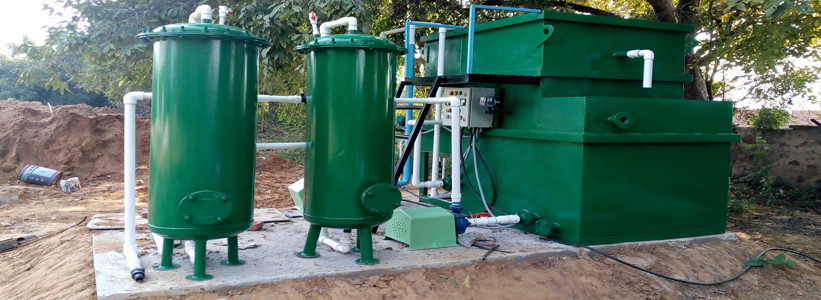Sewage Treatment Plant
Water and Process Solutions / STP

Description
E-flocx is an accelerated electrocoagulation system which destabilises dissolved, colloidal , emulsified and other stable compounds in water and converts them into suspended particles. These suspended particles get removed on filtration and result in completely colourless, odourless and reusable water. Eflocx has proven to be a very versatile process able to handle large variety of wastewaters of different volumes.
Working principle
The process works on the principle of controlled dissolution of charged ions in water. These charged ions on contacting various pollutants like suspended solids, bacteria, organics, heavy metals etc. neutralize them and coagulate them. These coagulated solids are subsequently filtered using suitable filtration equipment.
Features of Eflocx
- Eflocx is a state of the art technology designed for today's time
- Eflocx technology can lead to lot of saving on space vis a vis conventional technology
- There are significant savings on labour, chemical cost and electrical power
- As the process is not based on moving parts there is low maintenance except routine replacement of electrodes.
- The systems are modular in nature hence expansion and modification is easily possible. The system is portable in nature and thus can be shifted and transported in case the industry is being relocated.
- The operating cost of system is in the range of Rs. 5 to Rs. 15 per kilo liter (1000 litres) depending on the wastewater characteristics.
Advantages of Eflocx compared to conventional systems
E-Flocx System
- Low space compared to conventional systems and less holding capacity required due to continuous treatment
- 70-80% Less sludge production compared to conventional systems. Sludge produced is like a dry cake and very easy to handle.
- No additional chemicals required
- Significant saving on civil work cost as civil work construction is minimal compared to conventional systems.
- Can easily handle shock loads of effluents by changing current density or flow rate
- Modular in nature. Very convenient to scale up capacity with additional units.
- Completely automated systems
Conventional System
- Floor space required is significantly higher as holding capacity of tanks needs to be high due to batch treatment.
- Large quantities of wet sludge produced which is difficult to handle and additional space is required for sludge drying bed, which is not very effective
- Chemicals are required for coagulation and flocculation, chemical handling and storage requires manpower and additional space
- Civil work construction is very extensive due to construction of holding tanks, settling tanks, aeration tanks, secondary clarifiers, sludge drying beds etc.
- Shock loads of effluents will not be handled by conventional systems.
- Not modular in nature. Once installed, scaling up capacity is not possible.
- Manual systems with little scope of automation requiring dedicated manpower.
Industrial applications
- Textile Process Effluent
- Sewage treatment plant
- Water Jet Loom
- Electroplating industry
- Tannery
- Food processing and Dairy
- Metal processing
- Automobile service station
- Yarn Dyeing Industry

